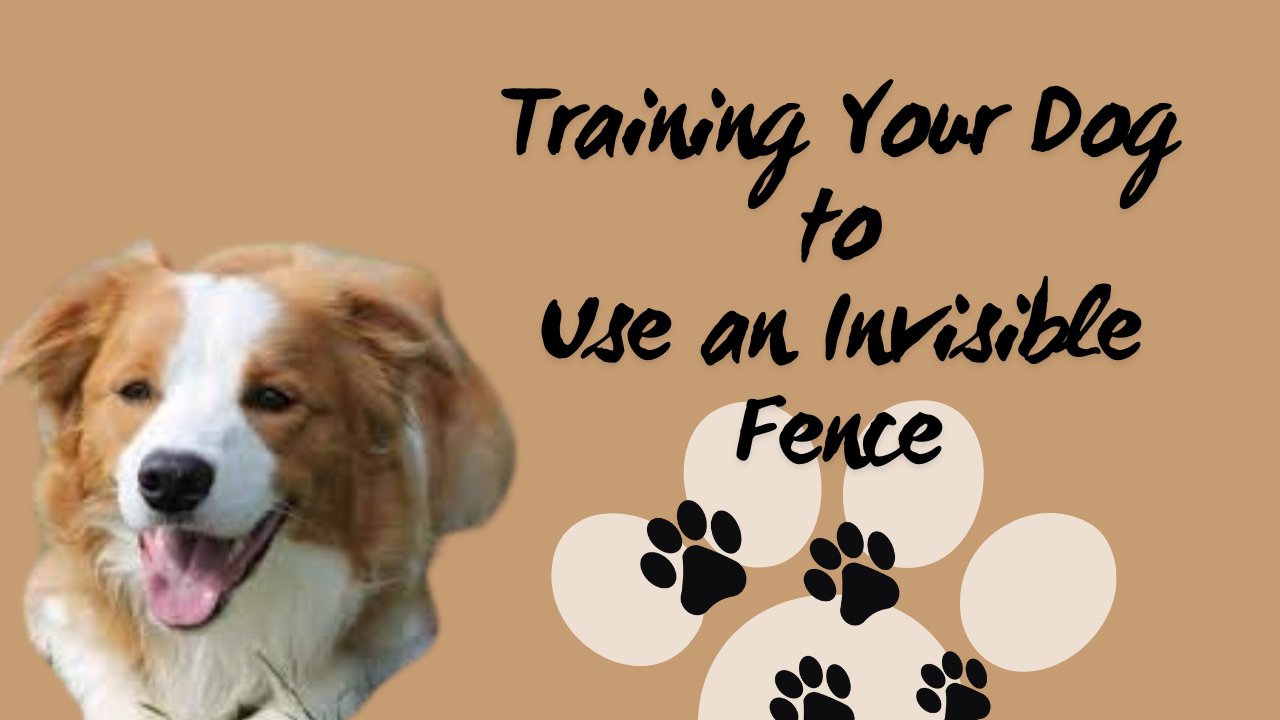
Training Your Dog to Use an Invisible Fence: A Comprehensive Guide
Introduction For dog owners seeking an alternative to traditional physical fences, invisible fences offer a convenient and effective solution. These systems, comprising a transmitter, a receiver collar, and boundary flags, create an invisible perimeter that dogs learn to respect. However, training your dog to use an invisible fence requires patience, consistency, and positive reinforcement. This article serves as a comprehensive guide, walking you through the training process to ensure a smooth transition for both you and your furry companion. Preparation Before embarking on the training journey, it’s crucial to prepare adequately by setting up the invisible fence system correctly. Follow the manufacturer’s instructions meticulously to install the transmitter and position the boundary flags. These flags serve as visual markers for your dog, aiding in understanding the boundary’s parameters. Additionally, ensure the receiver collar is properly fitted and that your dog is comfortable wearing it.
Training Steps
- Introduction to the Boundary Flags:
- Days 12: Begin by introducing your dog to the boundary flags while on a leash. Walk them around the perimeter, allowing them to see and sniff the flags. Use a consistent command like “watch the boundary” to help your dog associate the flags with the boundary line.
- Repetition: Repeat this exercise multiple times a day to reinforce the association between the flags and the boundary.
- Introducing the Warning Tone:
- Days 34: With the receiver collar activated, guide your dog towards the boundary. As they approach the flags, the collar will emit a warning tone. Gently pull your dog back and use a command like “back” or “away.” Praise them when they retreat from the boundary.
- Consistency: Consistent repetition of this step is essential to reinforce the warning tone’s significance.
- Introduction to Static Correction:
- Days 57: Once your dog is accustomed to the warning tone, it’s time to introduce the static correction. Repeat the previous steps, but this time allow your dog to experience the static correction if they cross the boundary. Immediately guide them back and offer praise. Ensure the correction level is mild and does not cause distress.
- Reinforcement: Continuously practice this step, gradually increasing the distance from the boundary while reinforcing the training commands.
- OffLeash Training:
- Week 2: After a week of consistent training, attempt offleash training within the boundary. Supervise closely and be prepared to guide your dog back if they approach the boundary. Use the same commands and praise them for staying within the boundaries.
- Progressive Freedom: Gradually extend the duration of offleash time, always monitoring your dog’s behavior and reinforcing the training commands.
Common Challenges and Solutions
- Fear or Anxiety: Some dogs may initially exhibit fear or anxiety towards the static correction. Employ positive reinforcement techniques and ensure the correction level is appropriate for your dog’s size and temperament.
- Consistency: Inconsistent training practices can confuse your dog. Ensure all family members use the same commands and adhere to the training schedule.
- Distractions: Initiate training in a quiet environment initially, gradually introducing distractions once your dog has a firm grasp of the boundaries.
Safety Tips
- Regular Collar Checks: Routinely inspect the receiver collar to ensure it is properly fitted and that the batteries are functioning.
- Supervision: Maintain constant supervision, particularly during the initial training phase.
- Boundary Flags: Leave the boundary flags in place for at least a month until your dog is fully acclimated to the boundaries.
Conclusion Training your dog to utilize an invisible fence necessitates dedication, patience, and positive reinforcement. By adhering to the outlined steps in this guide, you can effectively assist your dog in comprehending and respecting the boundaries of the invisible fence, ensuring both their safety and your peace of mind. Keep in mind, each dog learns at its own speed, so stay patient and empowering all through the preparation cycle. With perseverance and consistency, you can successfully integrate an invisible fence into your dog’s routine, providing them with freedom within established limits. For More Information read wag’s approach as well .



Hi, this is a comment.
To get started with moderating, editing, and deleting comments, please visit the Comments screen in the dashboard.
Commenter avatars come from Gravatar.